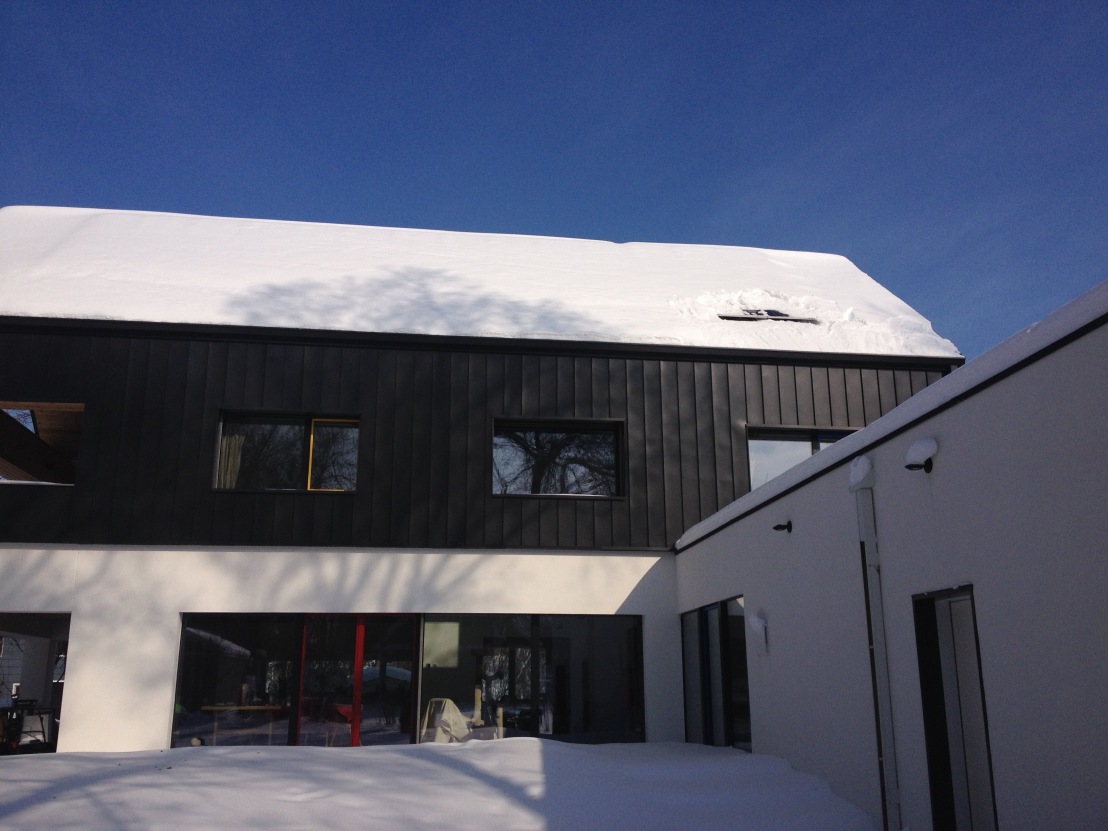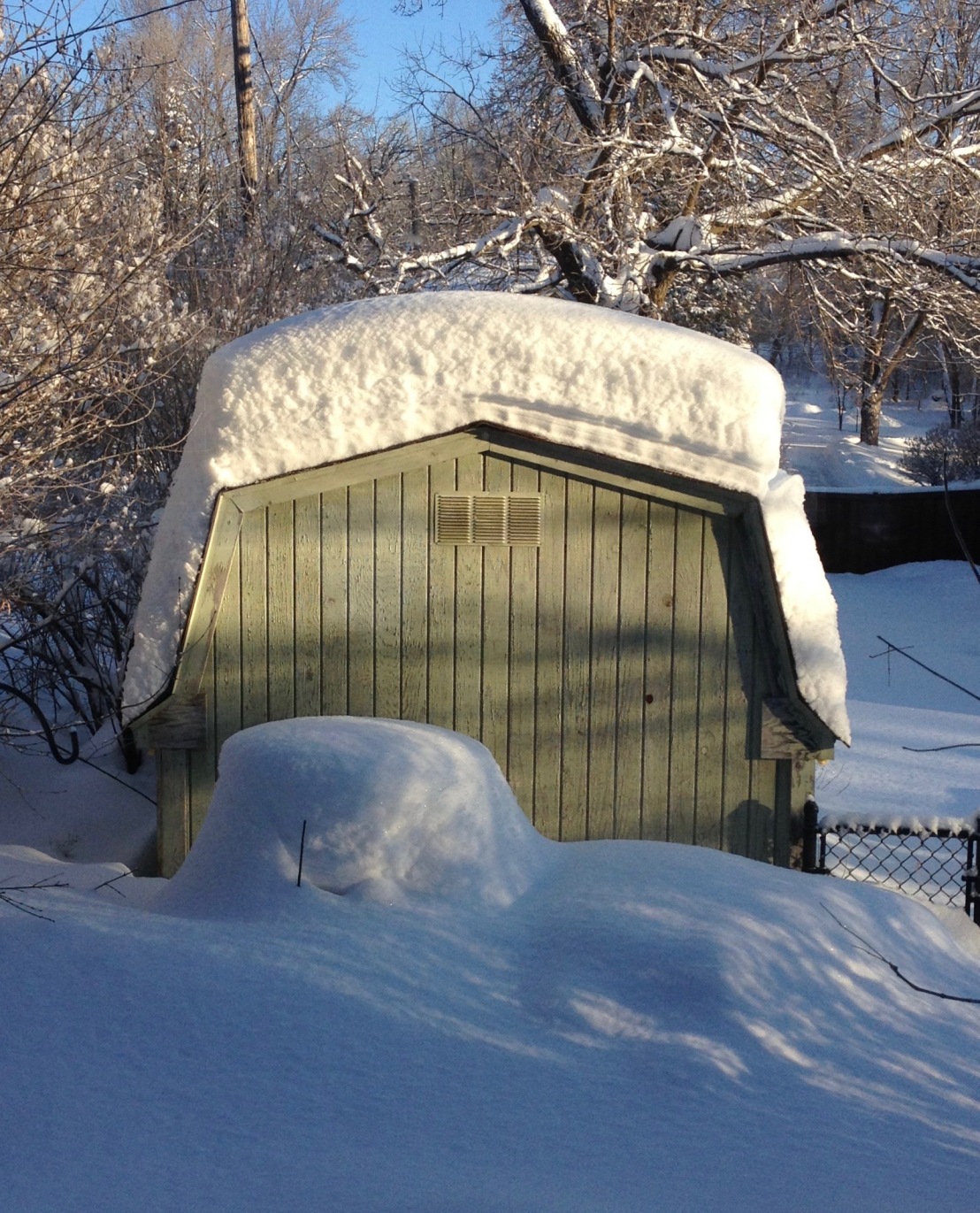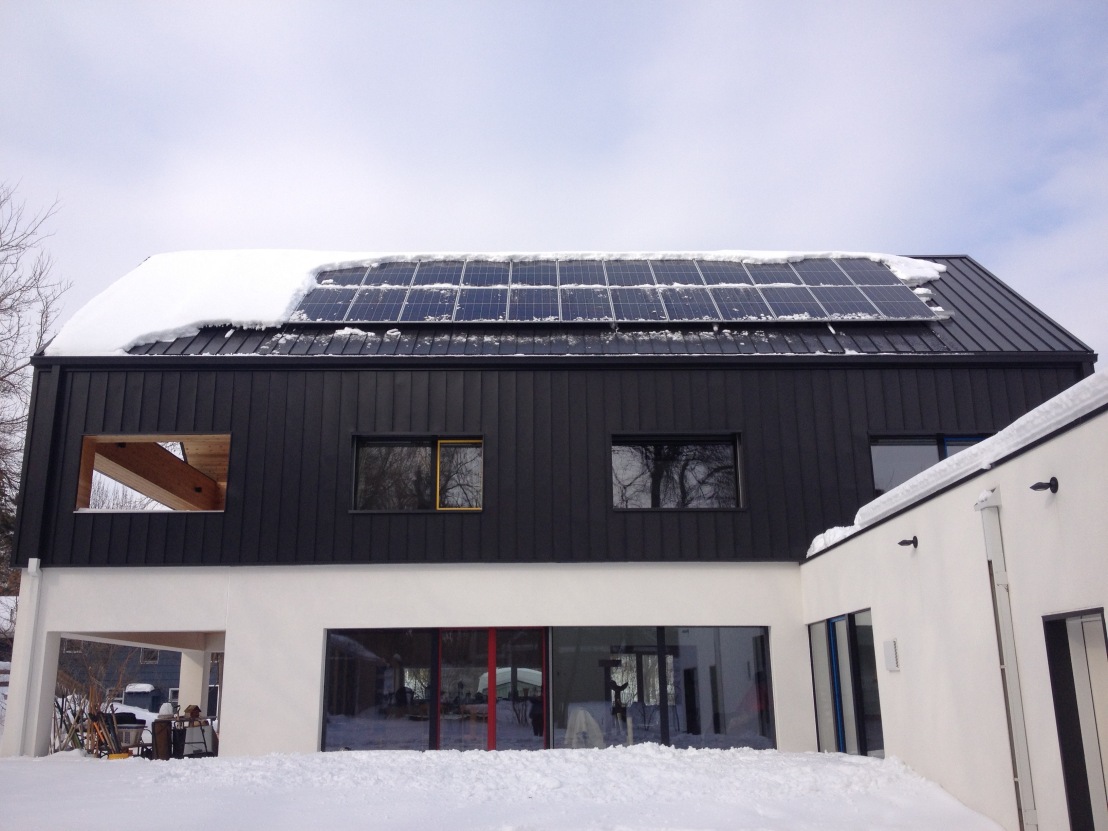Late January 2019, Innovative Power Systems (IPS, our solar installer) set up our battery. It is expected to help cover interruptions in electric supply, no matter what the cause.
It is an LG Chem, 400 V, 9.8 kWh.
The battery is mounted on the inside garage wall with a sturdy steel bracket. It weighs in the neighborhood of 200 lbs. It will hold enough energy to supply our basic minimum needs for about 8 hours: refrigerator, select lights and outlets, ventilator, communications (we will be color-coding outlet and switch plates to easily identify them). Because the house is so good at maintaining its internal temperature, we don’t need to worry much about the heating.
The equipment is all mounted inside the garage, excepting the meters and cut-off switches. This helps warm the garage, and makes it easy for us to check production and it also keeps the equipment warmer. The garage is highly insulated, with a few tiny leaks at the doors. The coldest it got was still above freezing.
The lowest outdoor air temperatures we saw over the winter were -29 F. The wind-chill was -32. We had a minor panic at -29F, realizing that the LG Heat pump was no longer warming the house. At about 5 F, heat pumps don’t have much to work with. The indoor temperature got as low as 59 F (not by a window where the weather station sits, that was 52) while repair techs figured out there was a wire still unconnected.
As a note for comparison, 7 months later, we are at a heat index of 114 F. The humidity and temperature ranges creates a great challenge for stable home construction.
The battery has run a few times in those 7 months, and we hardly notice the blip as our system switches from grid to back-up. The choice to have a battery was made so that we would have uninterrupted power to the basic systems (we work from home most days). The cost was about the same as adding a larger array of solar to our roof. In retrospect, we might have chosen the larger array, and saved for a back-up system later.
At this writing, in mid-July, we can see that the financial choice for maximizing solar would have paid off much more quickly, and the battery is more a comfort choice than a financial one. February was a total solar loss, as the snow and deep cold left a glacier about 18″ thick on the panels.

The right side of the roof has a small area we cleared away with an extension window-washing wand. This was over an hour of work. Our hope was to give enough clear area to heat and melt the rest. This was not what happened.
The little shed sits outside our kitchen window, and shows a close view of the accumulated snow.

It took another 2.5 weeks before the panels saw the sun. The thunder when the snow slid was loud!

The battery charges off our system in the day, and it does raise our total energy consumption just to stay charged. The wiring is designed for only use by our home systems: when the grid is down, it switches over to battery. Unlike Massachusetts and a few Atlantic Islands, Xcel Energy in Minnesota does not have a battery buy-back for homeowners.
We continue to be pleased with IPS, and the electrician who did this installation for us as well. He explained what we needed to know, and carried on conversation about the future of housing and energy, and we learned his philosophy degree comes in handy in many ways while on the job.













